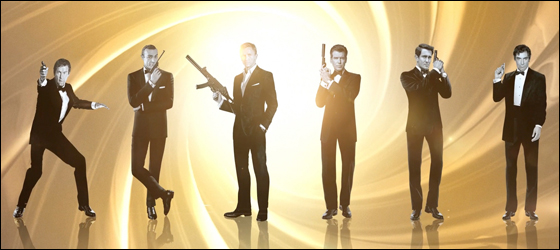
The James Bond films have been entertaining audiences for 60 years. The first film, Dr No, was released in 1962 and starred Sean Connery as the iconic British spy. Since then, there have been a handful of different actors who have played the role of James Bond, each bringing their own unique style to the character.
The series is known for its thrilling action sequences, exotic locations, and beautiful women with iconic theme songs, performed by well-known singers and bands. Hardcore fans of the series find the films offer so much more than any other action franchise.
The series has had its share of ups and downs over the years, but its longevity is a testament of how the movies have managed to capture the imagination of audiences over the decades. Each era has its own fans and critics but taken as a whole the James Bond films are classics. The series is one of the most popular and well-known in the world.
Bond’s beginnings
Dr No was the first film in the James Bond franchise, and it was a huge success. It grossed over $59 million at the box office and received critical acclaim. The film’s popularity spurred on the production of subsequent films in the series, and today there are twenty-five movies in total. But how did such a successful franchise get its start?
It all began with Ian Fleming, the author of the James Bond novels. Fleming wrote his first novel, Casino Royale, in 1953. The book was an instant hit, and Fleming followed it up with eleven more novels and two short story collections over the next twelve years.
Fleming had always seen the potential for James Bond on the screen. Indeed, he sold the rights to his first novel early on and it was adapted for television in 1954. The screen rights were picked up by Charles K Feldman who went on to produce the 1967 spoof with Peter Sellers, Ursula Andress, David Niven, Orson Welles, Woody Allen and a whole host of other actors.
And although nothing ever materialised, Moonraker was written as a screenplay which Rank bought the rights to in 1955. While that film version didn’t materialise, Fleming instead wrote a novel based on his ideas.
And in 1958 Fleming was asked by CBS to write 32 episodes of a planned James Bond TV series. When that didn’t work out he adapted a number of the episodes stories he had worked on for his first collection of short stories, For Your Eyes Only.
In mid-1958, Ian Fleming and his friend Ivar Bryce had the idea to make a James Bond film. Bryce then introduced Fleming to Kevin McClory, an Irish writer and director. The three of them formed Xanadu Productions together. They created a story outline which included an aeroplane full of celebrities and a female lead called Fatima Blush. McClory was particularly interested in the underwater world and wanted to make a film that reflected that.
They produced a number of different screen treatments and scripts with proposed titles SPECTRE, James Bond of the Secret Service and Longitude 78 West. After Fleming became disillusioned with the project McClory brought on Jack Whittingham to continue working on the script, which Fleming eventually titled Thunderball. And when the film project fell through Fleming based his novel of the same name on the scripts. McClory and Whittingham sued and the case was settled out of court with future editions of the novel acknowledging the contributions of all writers and tying up the film rights to Thunderball and, as it transpired, to criminal organisation SPECTRE.
The birth of Eon
The success of the books caught the attention of Harry Saltzman and Albert R Broccoli, two producers who were, independently of each other, looking to make a movie based on Fleming’s work. Salzman had taken an option out on the books but lacked funding. Broccoli was introduced to Saltzman by a mutual friend, the screenwriter Wolf Mankowitz. But when Saltzman refused to sell Broccoli the rights they instead went into partnership and formed Danjaq.
After declining a $400,000 deal from Columbia, they pitched United Artists on 20th June 1961. Saltzman and Broccoli walked out of United Artists New York HQ with a $1 million budget to make the first James Bond film and a six movie deal. They incorporated Eon Productions Ltd in London on 6th July 1961 to produce their James Bond films.
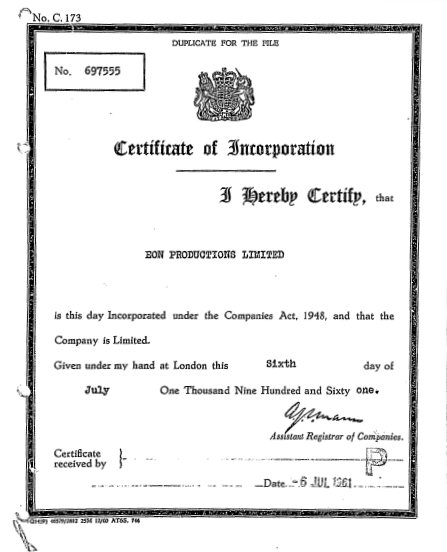
The certificate of incorporation for Eon Productions Limited dated 6 July 1961
Initially they planned on adapting Thunderball as the first Bond movie and work was done on producing a screenplay. However the legal action surrounding Fleming’s novel meant that the producers switched their focus instead to Dr No and got Richard Maibaum and Wolf Mankowitz working on a screenplay. Veering sharply from the novel in their first draft Dr No was a monkey, an idea that was luckily rejected.
Maibaum wrote the second draft alone, which was later worked on by Salzman’s secretary Johanna Harwood and thriller writer Berkely Mather. Believing the film would be a disaster, Mankowitz had his name to be removed from the credits.
However, the film still didn’t have a leading man despite screen testing more than a thousand contenders. A chance conversation at dinner one night led to Sean Connery’s name being proposed and after meeting with Saltzman and Broccoli in October 1961 they lobbied a reluctant United Artists to offer him the role. Eventually they relented and Sean Connery was offered a five movie deal.
Sean Connery
Director Terence Young took Connery under his wing and took shopping to his own shirt maker, tailor and shoemaker to kit him out as James Bond. To ensure Connery felt completely at home wearing suits Young is said to have instructed him to sleep in them.
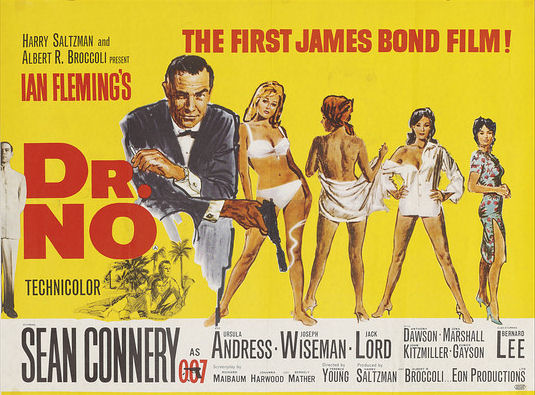
Young’s influence paid off though and audiences loved Connery in Dr No when it was released in the UK in October 1962 and he soon became synonymous with the role of 007.
He is often considered to be the quintessential 007 and his performances have helped make the James Bond films some of the most popular and successful movies of all time. In total Connery went on to appear in a total of six Eon Bond films over the course of his career as well as Kevin McClory’s 1983 Thunderball remake, Never Say Never Again.
The success of Dr No meant From Russia With Love quickly went into production with Terence Young directing again, which was released the following year. And then came Goldfinger in 1964 directed by Guy Hamilton and introducing the world to Bond’s gadget packed Aston Martin DB5 with its machine guns and an ejector seat. Goldfinger set the template for everything that came after.
However, Connery became disenfranchised with the James Bond films and over the course of five films his relationship with the producers became ever more fractious. By the time of You Only Live Twice in 1967 he had had enough of the role and announced it would be his last. Press and public were ever more demanding and Connery craved some privacy.
The big question was who would replace Sean Connery. He had made the role so much his own that it was difficult to imagine anyone else in the role.
George Lazenby
But eventually the filmmakers settled on an unknown Australian actor for the 1969 film On Her Majesty’s Secret Service, who had impressed them with his physicality.
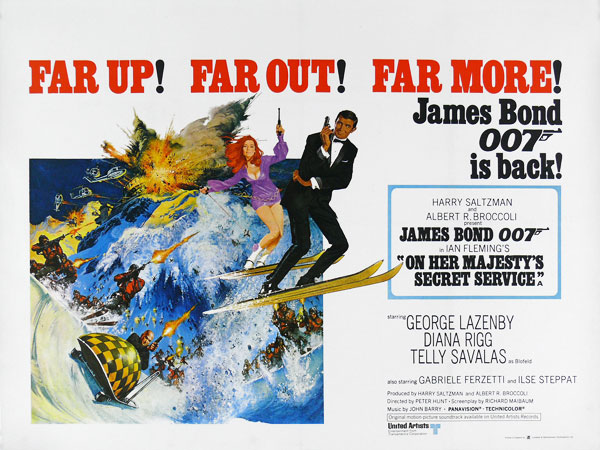
While the first films were fairly faithful to Fleming’s novels, they quickly became more and more extravagant and Connery’s fifth Bond film had done away almost entirely with Fleming’s plot. But for On Her Majesty’s Secret Service director Peter Hunt returned to Fleming. It closely follows the book, including the shock ending.
Despite going all out to land the role of James Bond, Lazenby decided to quit after just one film. His agent considered the changing attitudes of the swinging sixties would mean the Bond films. Lazenby took his agent’s advice on board and, against the wishes of the producers, refused to sign a contract for more films.
Without Sean Connery as Bond the film was relatively poorly received and rated poorly for many years. But more recently though it has been re-evaluated and many Bond fans consider it to be the best of the entire series.
Sean Connery did return for one more film in the Eon series though. But after driving a hard bargain to return in Diamonds Are Forever he set up the Scottish International Education Trust to which he donated his entire $1.25 million fee.
Roger Moore
Roger Moore was the third actor to play the legendary spy, making his debut in 1973’s Live and Let Die. Moore played Bond very differently to his predecessors. He brought a light-heartedness and sense of humour to the character that was very different from his predecessors.
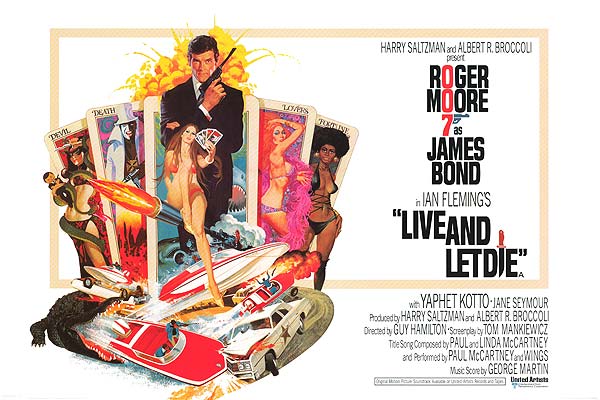
Moore’s films moved the character further away from Fleming’s and while the films used Fleming titles the plots have little in common with their literary cousins. Some fans look upon the Moore era as a low point in the series because of this, preferring that the movies should remain as faithful to Fleming as possible. But Roger Moore’s portrayal of 007 also has many fans.
His films often featured outlandish villains, outrageous stunts, and even more outrageous gadgets, but Moore always managed to make it all work. His one-liners were always delivered perfectly, often with a quizzically raised eyebrow. Whether it was his suave charisma or effortless cool, Moore made Bond his own and left a lasting impression on the role.
It should also be noted that the partnership between Cubby Broccoli and Harry Saltzman ended during this time. In 1975 Saltzman sold his 50% share in Danjaq to United Artists. The Spy Who Loved Me was the first Bond film solely produced by Broccoli.
Timothy Dalton
While there had been several actors in the running to take over the role while Moore threatened to quit the series. When he finally did hang up his Bond tuxedo Pierce Brosnan was cast as Bond. However, when the TV show in which he appeared, Remington Steele, was revived at the last minute he was forced to abandon his plans to play 007.
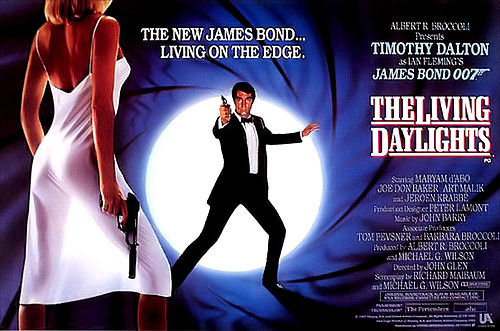
In his place Timothy Dalton was cast and with The Living Daylights he brought a new level of intensity to the character. While his predecessor claimed to have read just one of Ian Fleming’s books, Dalton mined the books for his portrayal of James Bond. After his second film, Licence to Kill, was released in 1989 Dalton was still expected to remain as Bond.
But when Danjaq sued MGM in a dispute over licencing the back catalogue, the new film was put on hold. And when the dispute was eventually resolved and pre-production restarted in 1993 Dalton felt the gap was too long. He decided to step aside.
Pierce Brosnan
Finally Pierce Brosnan was able to step into 007’s shoes after being so cruelly denied the role before. By the time of Goldeneye’s release in 1995 six years had passed since Licence to Kill. The intervening period had seen the fall of the Berlin Wall and the end of the Soviet Union. Many thought the gap was too long and, with the end of the Cold War, that Bond was no longer relevant anyway.
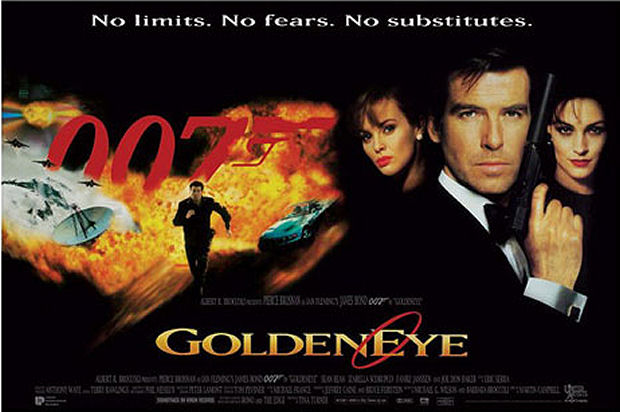
Cubby Broccoli took a back seat on Goldeneye, leaving stepson Michael G Wilson and daughter Barbara to produce the film while he acted as consulting producer. Their aim was to being Bond up to date for the 1990s, including casting Judi Dench as M, reflecting that MI5 was at the time headed by its first female Director General.
Goldeneye showed the naysayers that Bond was still relevant and introduced a whole new generation of fans to the series. It also spawned the popular video game of the same name that became some fans’ first contact with 007 and leading them to the films.
Brosnan continued in the role with Tomorrow Never Dies, The World Is Not Enough, and Die Another Day. In each of these films, he brought his own style to the iconic character and was hugely popular as Bond. Although expected to return for his fifth outing, the producers decided they needed the next film to go in a different direction. And when the rights of the first Bond novel came into their control they decided that there next film would be Casino Royale. And to do that they wanted a fresh face for the role.
Daniel Craig
The announcement of Daniel Craig as 007 in 2005 proved to be rather controversial. His blond hair and rugged looks were a departure from many fans’ idea of what James Bond should look like and a small segment of the fan community became vocal about it.
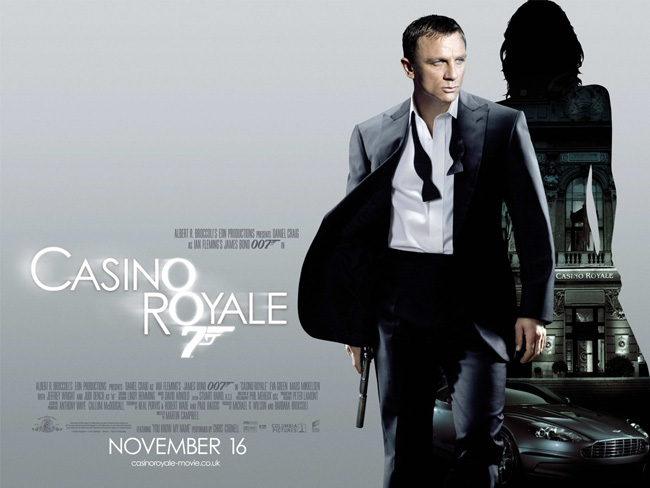
This was picked up by the UK tabloids who continued to report negatively on Craig throughout 2006 while Casino Royale was filming. But when the film was released it was a critical and commercial success and those negative stories were mainly forgotten. Casino Royale was very different in tone from any Bond film that had gone before it and it heralded in what many hoped would be a new golden age of 007.
To capitalise on what they thought was their new, winning formula, Eon’s bosses backed by Sony Pictures rushed to get the follow up into production. Quantum of Solace was first announced for May 2008 but a change of director meant it was released two years later Craig’s first Bond. It also endued a writers strike meaning the film starting shooting with an incomplete script. Instead of tapping into a new successful formula for Bond, the film was mainly a disappointment.
The follow up had begun production when MGM went into bankruptcy protection and work was halted while a buyer was found for the studio. Skyfall was eventually released in 2012 to huge success. The London Olympics provided another Cool Britannia moment and the film went on to become the first billion dollar Bond. SPECTRE followed three years later but was widely considered a disappointment. Much of that was due to the unconvincing angle of Bond being Blofeld’s foster brother but mainly it was an underwhelming plot.
While many expected that to be Craig’s final outing as 007, Barbara Broccoli played the long game. In the summer of 2018 he confirmed he would return for a final film, which started shooting in 2019. Once again there was a change of director which delayed filming. And just before No Time to Die was about to premiere the COVID-19 epidemic struck. Instead of 2020 the film was delayed until the end of September 2021.
The film was polarising among fans. In the film Bond is no longer a double-O and his old number is assigned to a black female, he discovers he has a daughter with Madeleine Swann and at the end he dies.
The next 007
Despite James Bond’s death in No Time to Die the end credits promise that James Bond Will Return.
Who that will be or when is currently unknown but don’t expect Bond 26 until 2024 or 2025 at the earliest. It’s going to be a long wait.
